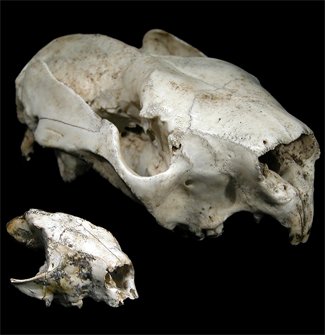Prehistoric koala named after Dick Smith

A 20-MILLION-YEAR-OLD koala skull from Queensland is a new species, which researchers have named after Australian Geographic founder and patron Dick Smith.
The discovery of Litokoala dicksmithi, which is around a third of the size of a modern-day koala, brings the total known living and extinct koala species to 18.
The skull was uncovered at Riversleigh World Heritage Centre in north-western Queensland – a hub for fossil research which Dick has provided support for over the years.
Wide diversity of ancient koalas

The skull of Litokoala dicksmithi next to the larger skull of a modern-day koala. (Credit: UNSW)
Dr Karen Black, a palaeontologist at the University of New South Wales in Sydney, says the discovery is one of the most complete koala fossils found, as most of the skull and snout are present, rather than just jaw bones and teeth.
“The other species, called Nimiokoala greystanesi, which was also discovered at Riversleigh, had a skull that was very possum-like in appearance,” says Karen. “Litokoala dicksmithi, however, appears to have been much more closely related to the modern koala with numerous similarities in the skull.”
The findings are published this week in the Journal of Systematic Palaeontology.
Ancient koala was agile, noctural
Karen says the koala probably weighed around 4kg, and was a more active, agile climber than modern-day koalas.
“An interesting feature of the Litokoala skull is the extremely large eye sockets, which suggest the intriguing possibility that these koalas were nocturnal with greater visual acuity than the living koala,” Dr Black said.
The researchers say the species lived in rainforests which covered much of Australia 20 million years ago. It is thought that it became extinct when most of the rainforests receded, around 15 million years ago.
This is the second Litokoala species named from the Riversleigh World Heritage Area. The first was named Litokoala garyjohnstoni in 2007, to honour philanthropist Gary Johnston, who donated $1 million to UNSW to create Australia’s first Chair of Water Management.
RELATED STORIES




